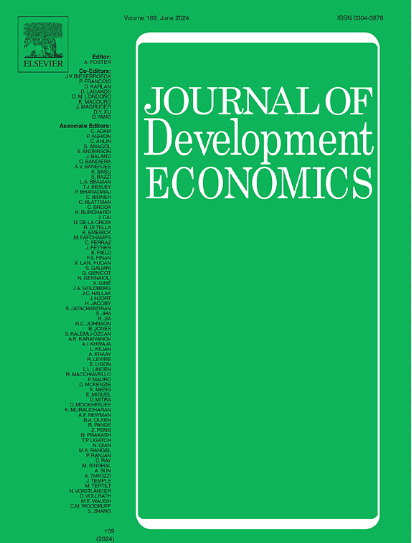利用私营部门调查数据估算 2011 年后印度的贫困状况
IF 5.1
1区 经济学
Q1 ECONOMICS
引用次数: 0
摘要
印度全国抽样调查组织最近一次发布支出调查报告要追溯到 2011 年,这也是最近一次官方贫困和不平等估算的基础。本文采用一种新方法,利用私营部门最新开展的家庭面板调查来估算印度自 2011 年以来的贫困和不平等轨迹。结果表明:(1) 2019 年的极端贫困率估计将低于 2011 年,农村地区的减贫幅度可能更大;(2) 与货币化事件相吻合,2016 年的城市贫困率可能有所上升。这些结果不应被解释为确凿的证据。虽然估计的贫困趋势与一系列确凿证据相符,但由于私营部门调查的抽样误差和非抽样误差,仍存在很大的不确定性。本文章由计算机程序翻译,如有差异,请以英文原文为准。
Estimating poverty for India after 2011 using private-sector survey data
The last expenditure survey released by India’s National Sample Survey organization dates back to 2011, which underpins the last official estimates of poverty and inequality. This paper adopts a new approach to estimate India’s poverty and inequality trajectory since 2011 using a newly available household panel survey conducted by the private sector. The results suggest that (1) extreme poverty is estimated to be lower in 2019 than in 2011, with greater poverty reductions likely in rural areas, and (2) coinciding with the demonetization event, urban poverty likely rose in 2016. The results should not be interpreted as definite proof. While the estimated trends in poverty sit well with a range of corroborative evidence, significant uncertainty remains stemming from sampling and non-sampling errors associated with the private-sector survey.
求助全文
通过发布文献求助,成功后即可免费获取论文全文。
去求助
来源期刊

Journal of Development Economics
ECONOMICS-
CiteScore
8.30
自引率
4.00%
发文量
126
审稿时长
72 days
期刊介绍:
The Journal of Development Economics publishes papers relating to all aspects of economic development - from immediate policy concerns to structural problems of underdevelopment. The emphasis is on quantitative or analytical work, which is relevant as well as intellectually stimulating.
 求助内容:
求助内容: 应助结果提醒方式:
应助结果提醒方式:


